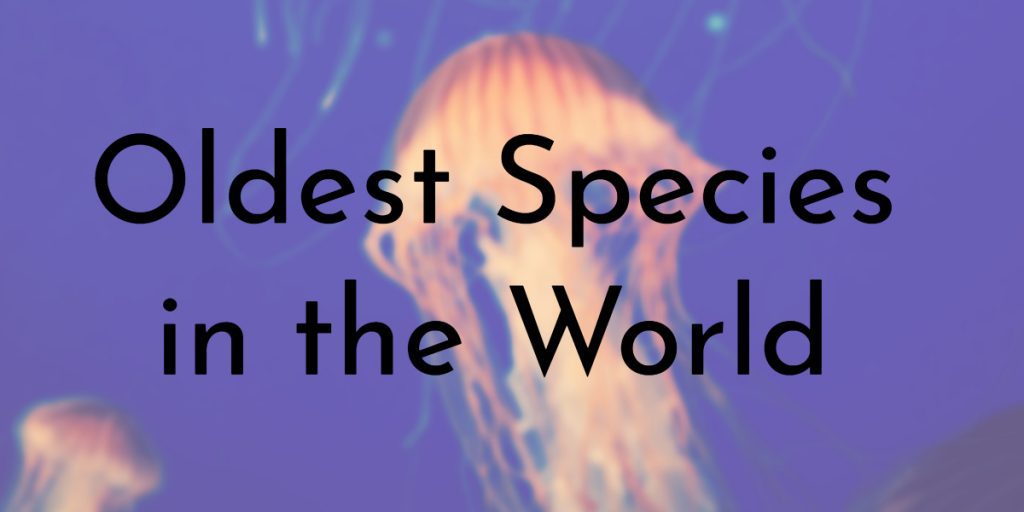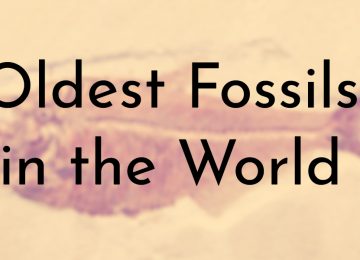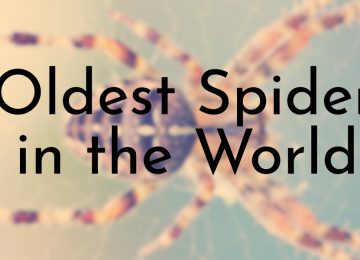Most of the Earth’s history has been uncovered through research into what is known as the fossil record. Because of this research, scientists have been able to piece together the evolutionary tree as well as the evolution of the Earth itself. All of the species on this have ancestors whose fossils date back over hundreds of million years ago.
Also, nearly all of these species are known as “living fossils” because they have not evolved too far from their original forms. And these are species whose ancestors left their mark hundreds of millions of years ago
10. Horsetails
Age: over 300 million
Earliest Geologic Eon: Late Devonian
Kingdom: Plantae
Location: Worldwide except for Antarctica, but mostly concentrated in the non-tropical northern hemisphere
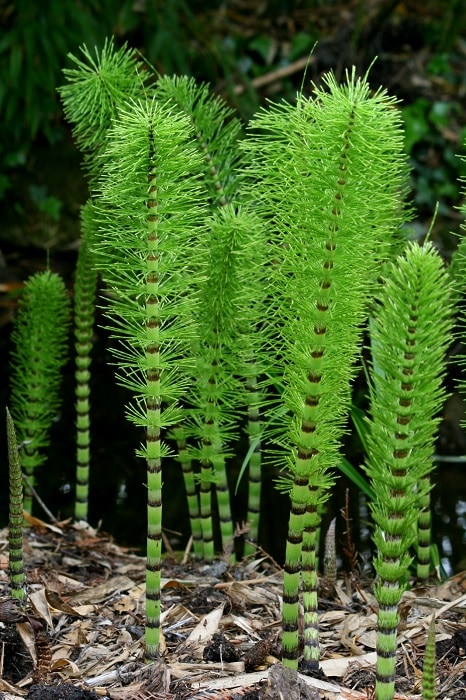
Equisetum, commonly called horsetails, are the only surviving member or class of plants called Equisetopsida. These plants are over 300 million years old and form a majority of the understory of the late Paleozoic forests. Ancient horsetails dominated the land for more than 100 million years and could grow as tall as 30 meters (98.4 feet).
Today’s horsetails are much smaller, but instead of seeds, horsetails spread their lineage through spores, like their ancestors.
In several places around the world, horsetails are considered weeds and unwanted living plant pests. However, they are widely used by several cultures as food, wood polish, and, medicine.
9. Coelacanth
Age: c.400 million years
Earliest Geologic Eon: Devonian
Kingdom: Animalia
Location: Coastlines of the Indian Ocean and Indonesia
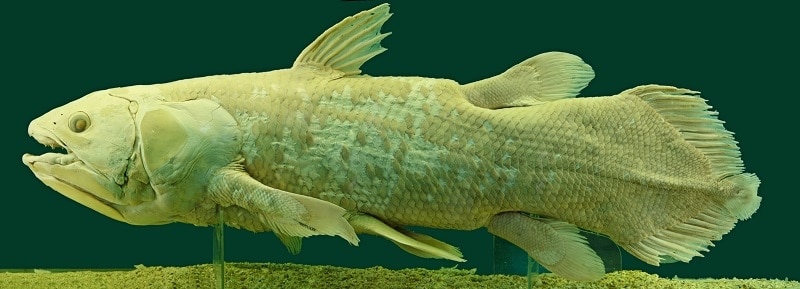
Until a live specimen was discovered in 1938, the coelacanth was thought to have gone extinct about 65 million years ago, along with the dinosaurs.
Scientists believe that this mysterious fish represents an early step in the evolution of fish to terrestrial four-legged animals.
Coelacanths have many unique characteristics, including its four fins that extend away from its body like legs. These fins also move in an alternating pattern, similar to other four-legged animals, such as a trotting horse.
They also have a joint in their skulls which lets them open their mouths wide enough to fit larger prey; and thick scales that do not exist in any other known living fish.
8. Elephant Shark
Age: c.400 million years
Earliest Geologic Eon: Devonian
Kingdom: Animalia
Location: Marine waters off southern Australia and Tasmania; south of East Cape; and Kaipara Harbour, New Zealand
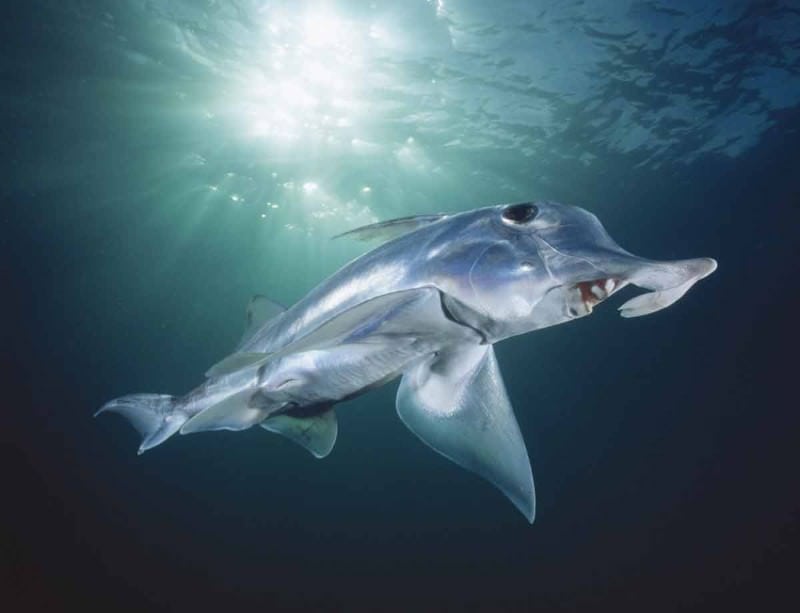
Despite its name, the elephant shark is not actually a shark, but a type of cartilaginous fish. It belongs to a group of fish called ratfish, which diverged from sharks about 400 million years ago. They are believed to be one of the oldest known vertebrate species.
Researchers have sequenced the elephant shark’s genome and discovered that it is unique and quite different from the genomes of other living vertebrates. They hope that the information gained from studying the elephant shark’s genome will provide insight into the evolution of bony skeletons.
The scientists say that the elephant shark has changed so little from its ancestors, making it the slowest evolving known vertebrate.
7. Horseshoe Crab
Age: 445 million years
Earliest Geologic Eon: Late Ordovician
Kingdom: Animalia
Location: ocean waters and soft sandy or muddy bottoms worldwide
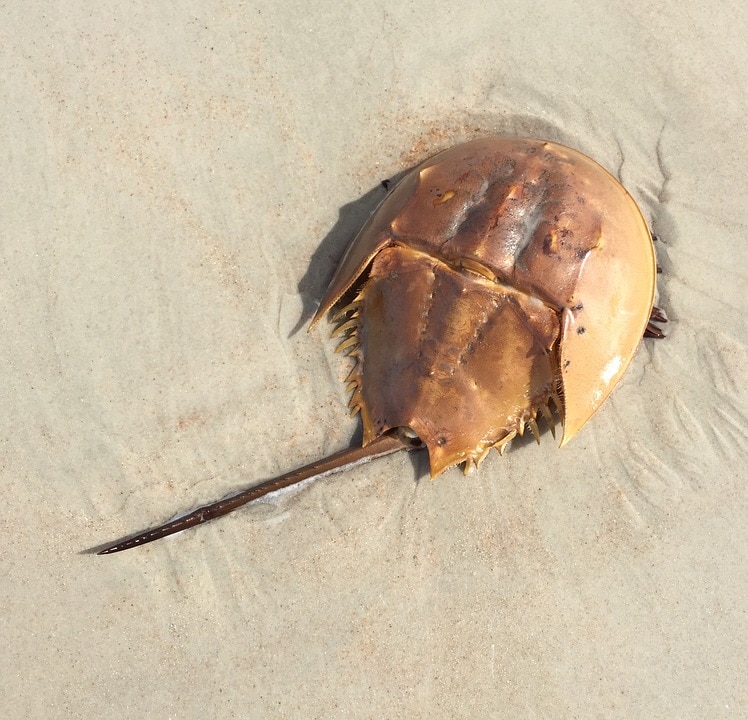
The horseshoe crab is probably the most famous living fossil. These alien-looking, ancient creatures are nearly identical to their oldest ancestors found in the fossil records.
In 2008, researchers found 445 million year old horseshoe crab fossils, which are about 100 million years older than any other horseshoe crab fossils ever discovered.
Unfortunately, horseshoe crabs face many threats from human development. Their blood carries unique properties that are used to test the safety of vaccines and other injectable blood.
Due to this, about 500,000 horseshoe crabs are harvested each year, and about 30 percent of their blood is taken. Between 10 and 15 percent of these harvested crabs die.
6. Nautilus
Age: c.500 million years
Earliest Geologic Eon: Late Cambrian
Kingdom: Animalia
Location: Indo-Pacific seas
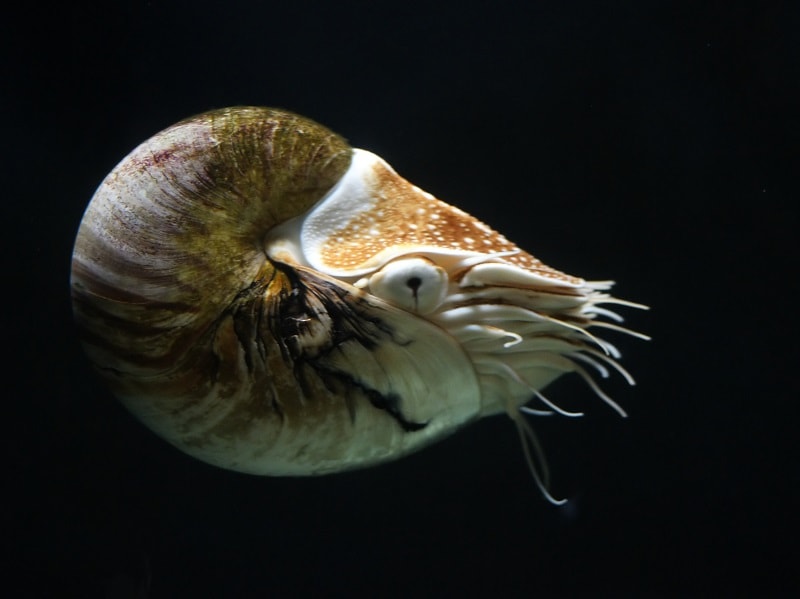
Nautiluses are easily recognizable by their spiral-chambered shells. Modern nautiluses have not evolved too far from their earliest ancestors, nautiloids. Through the fossil record, over 2,500 species of nautiloids have been discovered, but only six species still exist today.
Nautiluses are the longest-living cephalopods (octopus, squid, and cuttlefish), with a lifespan of 15 to 20 years.
Although nautiluses are not yet close to extinction, they are all protected by CITES Appendix II, which means they may become extinct if strict regulations on the trade of nautiluses are not enforced. They are currently over harvested for their shells, meat, and for use in aquariums. Their exquisite shells, adorned with the lustrous beauty of mother-of-pearl or nacre, are highly coveted
5. Velvet Worms
Age: c.500 million years
Earliest Geologic Eon: Cambrian
Kingdom: Animalia
Location: All tropical habitats and temperate zone of the Southern Hemisphere
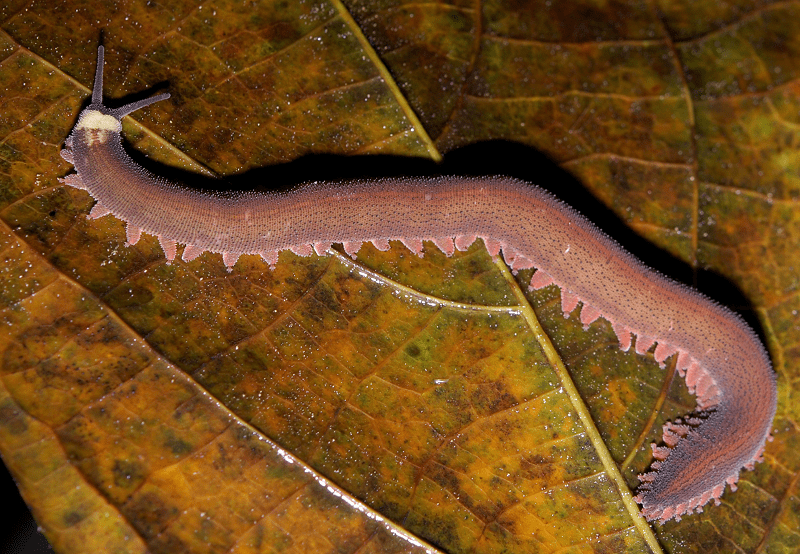
Onychophora, commonly known as velvet worms, are wormlike animals with a velvet texture, hence the nickname. They are ancient animals closely related to arthropods (such as millipedes and centipedes).
Unlike arthropods, velvet worms don’t have a hard exoskeleton and their velvety skin is water repellent. In addition to their unique velvet texture, velvet worms are known for having many stubby feet — between 13 and 43 pairs of feet — which all have a hooked claw.
Fossil records of lobopodians dating back to the Cambrian period bear a close resemblance to modern terrestrial velvet worms.
Since velvet worms have soft bodies that don’t fossilize well, it is not clear when their ancestors moved onto land. They may have made the transition about 490 – 430 million years ago.
4. Jellyfish
Age: over 500 million years; possibly 600 – 700 million years
Earliest Geologic Eon: Cambrian
Kingdom: Animalia
Location: Marine waters worldwide; some species inhabit freshwater

Jellyfish are the oldest multi-organ animal in the world and have existed in some form for at least 500 million years. The oldest known definitive jellyfish fossil dates back to 500 million years. Research on the the fossil was released in 2007 and states that it is over 200 million years older than the previously oldest jellyfish fossils.
New studies from around 2011, have revealed that jellyfish are more complex than previously thought.
One marine biologist disputed the conventional wisdom that jellyfish lack a central nervous system. He said that the nervous system of jellyfish might not be as obvious as it is in animals with a brain connected to a spinal cord, but it is distinct in its own way.
3. Sponges
Age: 600 million years
Earliest Geologic Eon: Precambrian
Kingdom: Animalia
Location: Marine waters worldwide; some species inhabit freshwater
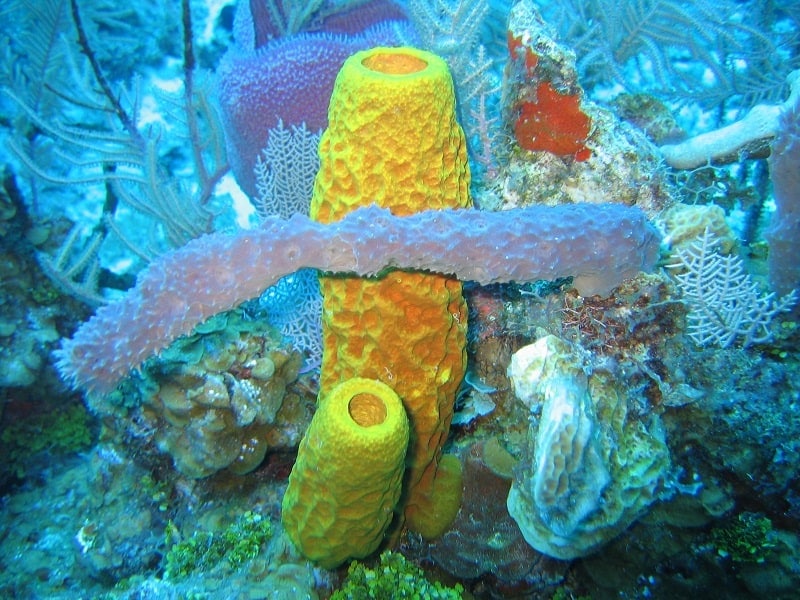
Although recent research suggests that comb jellies are older, sponges are still widely believed to be the first group to branch off the evolutionary tree from the common ancestor of all animals. Unlike most other animals, sponges lack cell walls, true tissues, and organs, and have asymmetrical bodies. There are about 5,000 – 10,000 different species of sponges.
The earliest fossil records of sponges date back to about 580 million years ago. These well-preserved fossil sponges were thought to be the oldest until a 600 million year old fossil was found in 2015. The new find challenges what scientists currently know about the timing of animal evolution.
2. Ctenophores (Comb Jellies)
Age: 700 million years
Earliest Geologic Eon: Cambrian
Kingdom: Animalia
Location: Marine waters worldwide
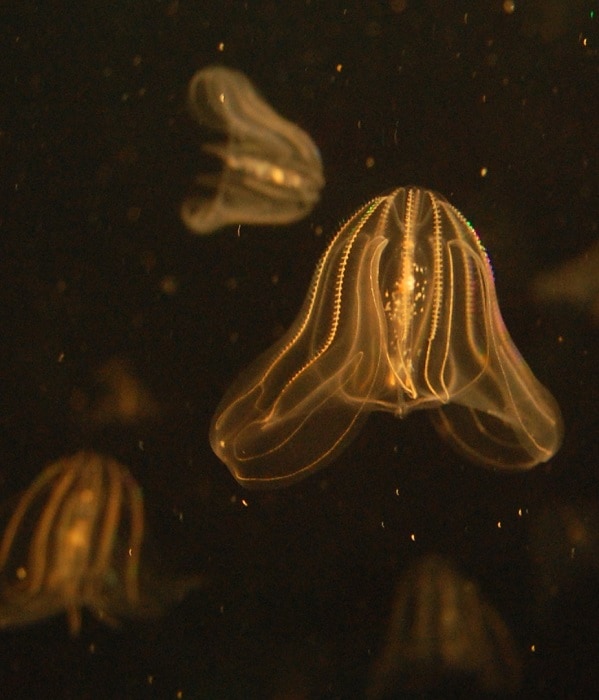
Until a few years ago, sponges were thought to be the first animals on the evolutionary tree. However, newer research suggests that ctenophores (comb jellies) are the first true animals, not sponges. Scientists first sequenced the genome of the earliest comb jelly, the sea walnut (Mnemiopsis leidyi), and compared it to several other species of comb jellies to determine that they split from the animal kingdom’s common ancestor before sponges.
The National Institute of Health (NIH) spearheaded this research into comb jellies to aid in research on animals as models for human diseases. Over half of the known disease genes in humans are present in comb jellies.
1. Cyanobacteria
Age: disputed – possibly 3.5 billion years; oldest undisputed evidence says 2.1 – 2.7 billion years
Earliest Geologic Eon: Archean
Kingdom: Eubacteria
Location: Nearly every terrestrial and aquatic habitat in the world
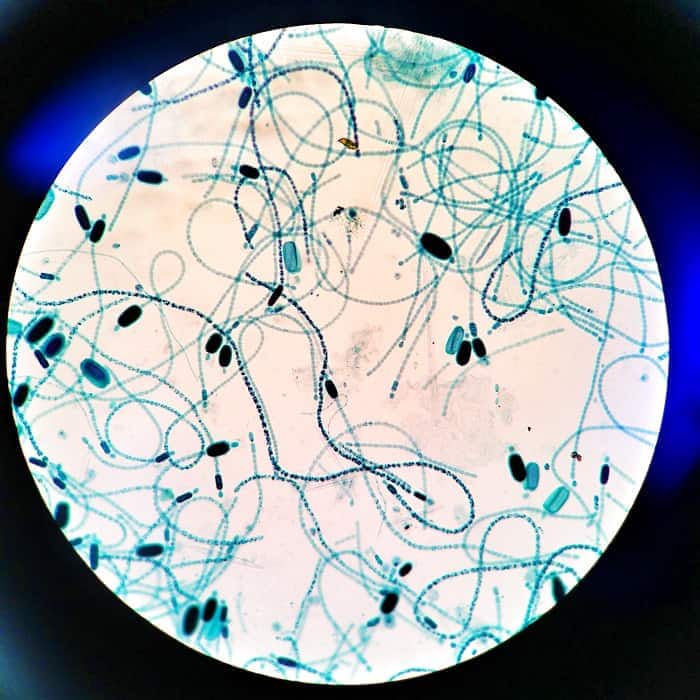
Cyanobacteria are the oldest existing species in the world. These bacteria are believed to be the Earth’s oldest known life form.
Fossilized stromatolites — a type of layered rock made up of microbial mats of microorganisms — dating back to over 3.5 billion years ago contain evidence of cyanobacteria activity. However, this evidence is disputed and as of 2010, the oldest undisputed evidence of cyanobacteria is 2.1 billion years old.
Cyanobacteria live in almost every terrestrial and aquatic habitat in the world, including, oceans, damp soil, desert rocks that were temporarily wet, and even Antarctic rocks. They are known for their blue-green color, especially aquatic cyanobacteria, which can form highly visible and colorful blooms.
OTHER POSTS YOU MAY BE INTERESTED IN


